Most varieties of roses are not adapted to harsh winters, but there are species that can withstand the harsh climate, but they need the help of a gardener in this.
Content
- 1 Do roses need pruning
- 2 Basic pruning rules
- 3 Pruning technique
- 4 Varieties of cropping
- 5 Trimming times in different regions
- 6 Cropping Methods
- 7 Pros and cons of autumn pruning
- 8 Ways to prune different varieties of roses
- 9 When is it best to prune roses in spring or fall
- 10 Care after trimming
- 11 It is necessary to remove the foliage if it has not spread around
- 12 Storage of cuttings until spring
Do roses need pruning
Pruning roses in the fall is necessary for several reasons. Trimming provides:
- rapid blooming of roses next year;
- full wintering of the bush without numerous shoots that will weaken the bush during wintering;
- giving the bush a compact look for a more convenient shelter for the winter;
- facilitating root tasks to provide nutrients for shoots;
- removal of weak and diseased branches with faded buds and pests that settled on them;
- plant rejuvenation;
- subsequently acquiring a beautiful view by the bush.
If you do not prune the roses, with age the crown can die out, the root shoot not removed in time will fill the middle and give the bush sloppy.
Basic pruning rules
In winter, no more than 7 shoots are usually left on the bush. The procedure for removing and shortening the stems is started when a stable temperature in the street is about -2 degrees. In the middle lane this is the end of October - the beginning of November.
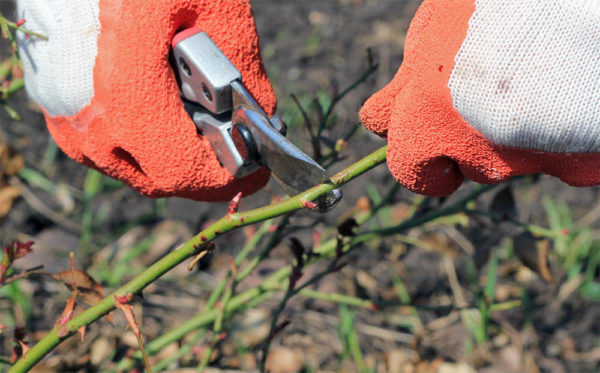
Trimming tools
The main tool for thinning bushes is a garden pruner, but experienced gardeners also use a sharp knife. You may need a hacksaw to cut thick branches that are larger than 2.5 cm in diameter.
Pruning
By the end of September:
- Stop watering and loosening the earth under roses to slow the growth of shoots.
- Do not allow late buds to bloom, pinching them.
- If it rains heavily over the rose garden, they pull the canopy.
- Bushes are sprinkled to a height of 10-20 cm.
Pruning technique
How to trim the shoot? To start the procedure, in addition to secateurs, it is necessary to prepare: a garden var, tight gloves to protect hands from thorns, a pink potassium permanganate solution to disinfect the tool. Basic Rules:
- a cut is made above the kidney by 1-1.5 cm at an angle of 45 degrees;
- the cut is done in one motion, without burrs;
- Do not cut over the kidney, looking inside the bush.
The wound from the cut must immediately be covered with garden varnish to avoid infection and rotting of the bush. After pruning, not only extra branches are removed, but also fallen leaves and other debris near rose bushes that pests can use for wintering. After the pruning procedure, not only plants are treated with fungicides, but also the ground under them.

Varieties of cropping
There are several types of pruning. It:
- Sanitary, in which the bush is evenly thinned out so that one shoot does not obscure the other.
- Anti-aging, after which there are stumps with 2.3 kidneys each. Used in work with old bushes.
Also produce bush pruning in autumn landing. Shoots are shortened, leaving 3 buds, and with an open root system, roots are also shortened by 3-5 cm to stimulate the growth of lateral roots.
Trimming times in different regions
In different regions, pruning occurs at different times. Autumn in the Leningrad region is famous for rains and winds. To shorten the branches and remove excess shoots, choose a dry, clear day in mid-October. To obtain even and smooth sections on the bushes, a quality tool is needed. Wounds are immediately treated with garden varieties or sprinkled with ash. After a few weeks, the plants are covered with sawdust, peat, and covering material.
In Siberia and the Urals, winters come quickly and are characterized by strong temperature drops. Therefore, in these parts the extreme conditions of roses grafted onto a dog rose will be better tolerated. Not too strong shortening of the shoots is carried out at the end of September and the rose bushes are covered in 2 weeks.
Cropping Methods
In the fall, gentle pruning is done to injure the plant as little as possible. For beginning gardeners, various methods of shortening the shoots are of interest.
Traditional pruning
This method is suitable for shortening all types of roses. Remove:
- young root shoots;
- unripe shoots;
- weak branches;
- dried stems;
- branches with visible signs of the disease.
After thinning, the plant has 5-7 healthy shoots that need a little shortening.
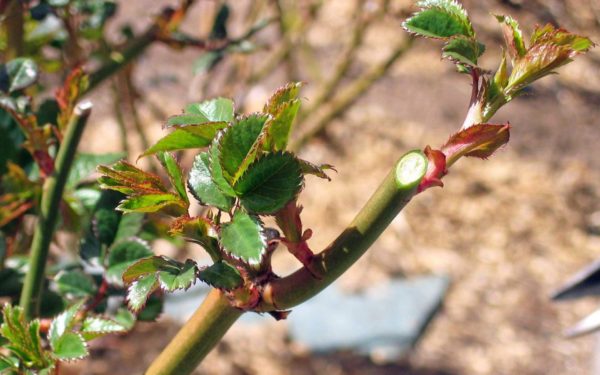
Strong cropping
It implies cutting the bush almost under the base, after which only a few stumps with 2.3 buds remain. In spring, powerful shoots are formed, blooming 1-1.5 months later than with light pruning.
Moderate pruning
In the case of using this method, the stems are shortened by half. 4-5 buds remain on the stem. Forms the summer of next year, long stems suitable for cutting, the bushes bloom a little later than with a weak shortening.
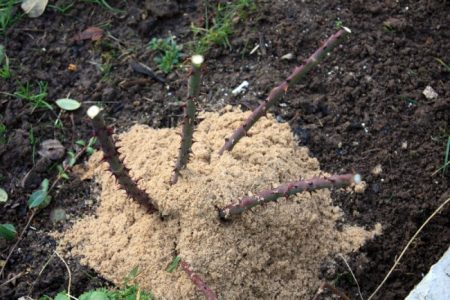 You may be interested in:
You may be interested in:Easy pruning
In this case, the stems of the rose bush are cut into 1/3 and leave up to 10 buds. The method is not suitable for varieties of roses that are capable of rapid growth. In June next year, the bush pleases with abundant flowering, but the grown short branches do not provide the opportunity to create a bouquet.
Pros and cons of autumn pruning
The positive aspects of shortening the shoots in autumn include:
- rapid flowering;
- bush rejuvenation;
- the accumulation of nutrients by the plant;
- strong root system.
Cons will appear in cases:
- if the shortening of the shoots occurred from the beginning of August, and unripened shoots froze;
- after the frost, the heat returned, and the buds started growing.
Ways to prune different varieties of roses
Abundant flowering of roses is provided by different pruning methods, which vary depending on the plant variety.
How to prune a climbing rose for winter
Many gardeners have a question: is it necessary prune shoots roses before sheltering them for the winter?
Climbing roses can be divided into 2 groups: blooming once and blooming repeatedly. For each group, the methods for shortening the stems are different. On climbing trees, 3-4 shoots of substitution are left in the fall, faded and dry stems are pruned. In large-flowered stems are shortened by 1/3. Next, the sections are treated with var or ash.
Before removing roses from the support, the ground is covered with lapnik or a wooden shield is placed on it, roses are placed on the substrate and covered with lapnik, ruberoid on top, covered with soil or sand.
How to prune a floribunda rose
Varieties of Rose floribunda were obtained as a result of multiple crosses of various varieties of roses. Represent bushes of various sizes from large to compact. Bloom in simple, semi-double, double flowers. For inexperienced gardeners, it is precisely the floribundas that are recommended for creating hedges that will delight flowering for a long time.
Roses floribunda pruning is necessary for rejuvenation. Strong and moderate shortening of the plant is based on the ability of this group to quickly recover and the ability to throw shoots with peduncles from the base of the bush. But such a cardinal haircut is more suitable for spring work, and in autumn all diseased, dry, unripe stems are removed, leaving a few of the strongest and cut them at a height of about 50 cm. Easy shortening of branches does not suit these varieties.
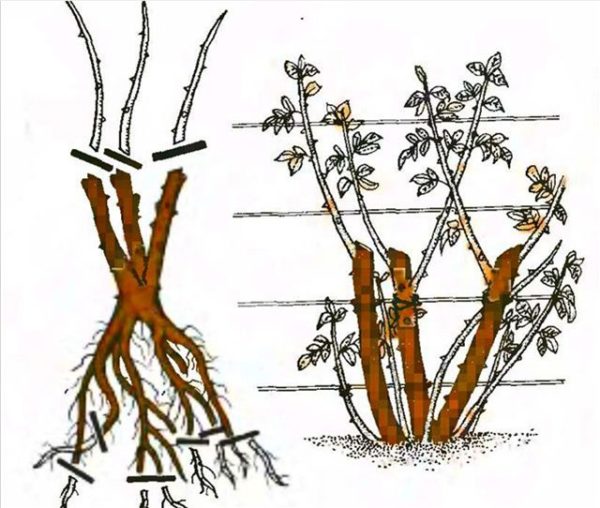
How to prune ground cover varieties
The people got the name of carpet roses for the ability to form a floral carpet. Widely used in the creation of elements of landscape design. They can be grown without pruning, but pruning ground cover roses in autumn increases flowering in the next season and gives the bush a more decorative shape. Instructions explaining step by step, all actions:
- the cut is done at an angle of 45 degrees, above the kidney by 0.5-1 cm;
- the kidney should be on the outside, the cut goes from it, and not to it;
- unripe, dried and diseased branches are cut with a sharp secateurs;
- strong stems shorten by 15-20 cm.
Wounds are treated with a disinfectant.
How to prune park bush roses
Park bush roses are an adornment of any park or garden. They grow up to 1.5 m in height, have continuous flowering for a month. In the fall, leaves are removed from the bushes and under them. In small forms of bush roses, pruning is performed by 10 cm, removing inflorescences, in tall bushes, pruning is performed by 30 cm.
How to prune hybrid tea varieties
Such varieties appeared as a result of selection in the middle of the 19th century. Are appreciated by gardeners for a variety of colors, flower sizes and resistance to temperature extremes. These varieties are suitable for cutting, as they form on 1 stem in flower. Pruning tea-hybrid roses for the winter is made in order to facilitate shelter in the cold period. The shortening of the shoots is moderate or gentle, as the main haircut will be made in the spring when removing frozen and damaged stems.
How to prune polyanthus roses
These species appeared as a result of breeding selection. Their parents: Chinese tea rose and Japanese dwarf. Polyanthus roses are low shrubs about 50-70 cm in height. They are used as a border decoration of flower beds and to create floral group compositions. Pruning branches of polyanthus roses as follows:
- remove sick and young shoots;
- in varieties with small flowers for the winter, leave for 2-3 buds on strong stems and 1-2 on weak;
- in flowers with large flowers, the ripened shoots of this year are removed by 1/3, in older ones they are lightly pruned.
How to prune miniature roses
These rose groups need less pruning. Before you leave for the winter sick, unripe branches, flowers and dried inflorescences are removed from the bushes.
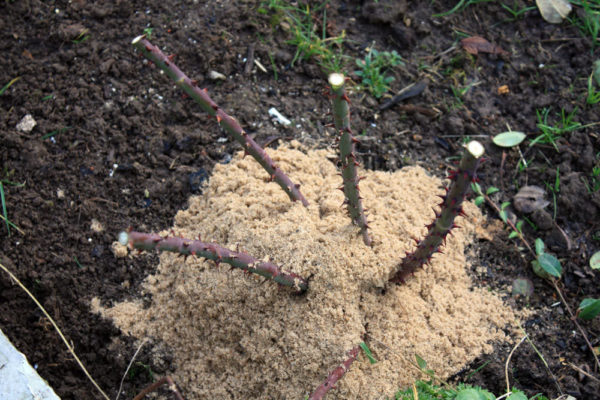
How to prune standard roses
Stamp roses are obtained as a result of vaccination on the dogrose. Hybrid tea, floribunda, climbing and ground cover materials are used as grafting material. In the first year of planting in autumn, flowering branches are pruned by a tree, removing green young growth. In subsequent years, the haircut is done according to the trim grafting grade.
When is it best to prune roses in spring or fall
Branching can be done in both seasons. In autumn, sparing corrective cutting of the shoots is performed, while in spring the procedure is radically performed. In early spring, inspect all rose bushes. The dead are completely removed or cut to a healthy tissue.
Care after trimming
2 weeks after pruning, the plants are fed with phosphorus and potash fertilizers so that the roses can gain strength and endure a harsh winter. Watering the bushes is not required, they gradually begin to hibernate.
It is necessary to cover rose bushes when the temperature reaches -5 degrees. Oak leaves, spruce branches, sawdust, peat can be used as covering material. Over small bushes, you can put arcs and cover from above with lutrasil, spanbond.

It is necessary to remove the foliage if it has not spread around
Some rose growers strongly object to the forced removal of foliage, believing that this procedure weakens the plant, and roses without foliage are not stocked with the necessary set of trace elements for a successful wintering.
Storage of cuttings until spring
When forming a bush, it is necessary to remove not only weak and diseased branches, but with excessive thickening of the bush, and healthy stems, from which you can later grow a varietal plant. There are several ways of winter storage of cuttings:
- Storage in the moss. Cuttings about 12-15 cm in size with 2-3 kidneys are kept in a rooting agent solution. Sphagnum moss, pre-treated with phytosporin, is laid out on a newspaper, cuttings are placed on it, moss is again on top. Wrap in a newspaper or plastic bag and put it in a cool place until warm. It can be a refrigerator shelf or a basement.
- You can save the cuttings until spring by rooting them in potato tubers. The plant will begin to grow rapidly, getting the necessary nutrients from potatoes. For this, a healthy medium-sized tuber is selected, eyes are removed, and potassium permanganate is disinfected. In the same solution it is necessary to withstand the tips of the cuttings for a while. In the tubers make holes along the diameter of the twigs and insert them. The tuber itself is planted in a pot with earth, covering the plant with a jar until the root is fully rooted.
- Cut cuttings are stored together with a bush covered for the winter.
None of the methods gives 100% safety, but if you want and experience you can breed different varieties of cuttings.
Rose is a capricious and choosy plant, which, with proper care and gentle care, will thank with a decorative look, fragrant flowering and beauty of flowers.

 Shelter of roses for the winter: at what temperature does the robot hold
Shelter of roses for the winter: at what temperature does the robot hold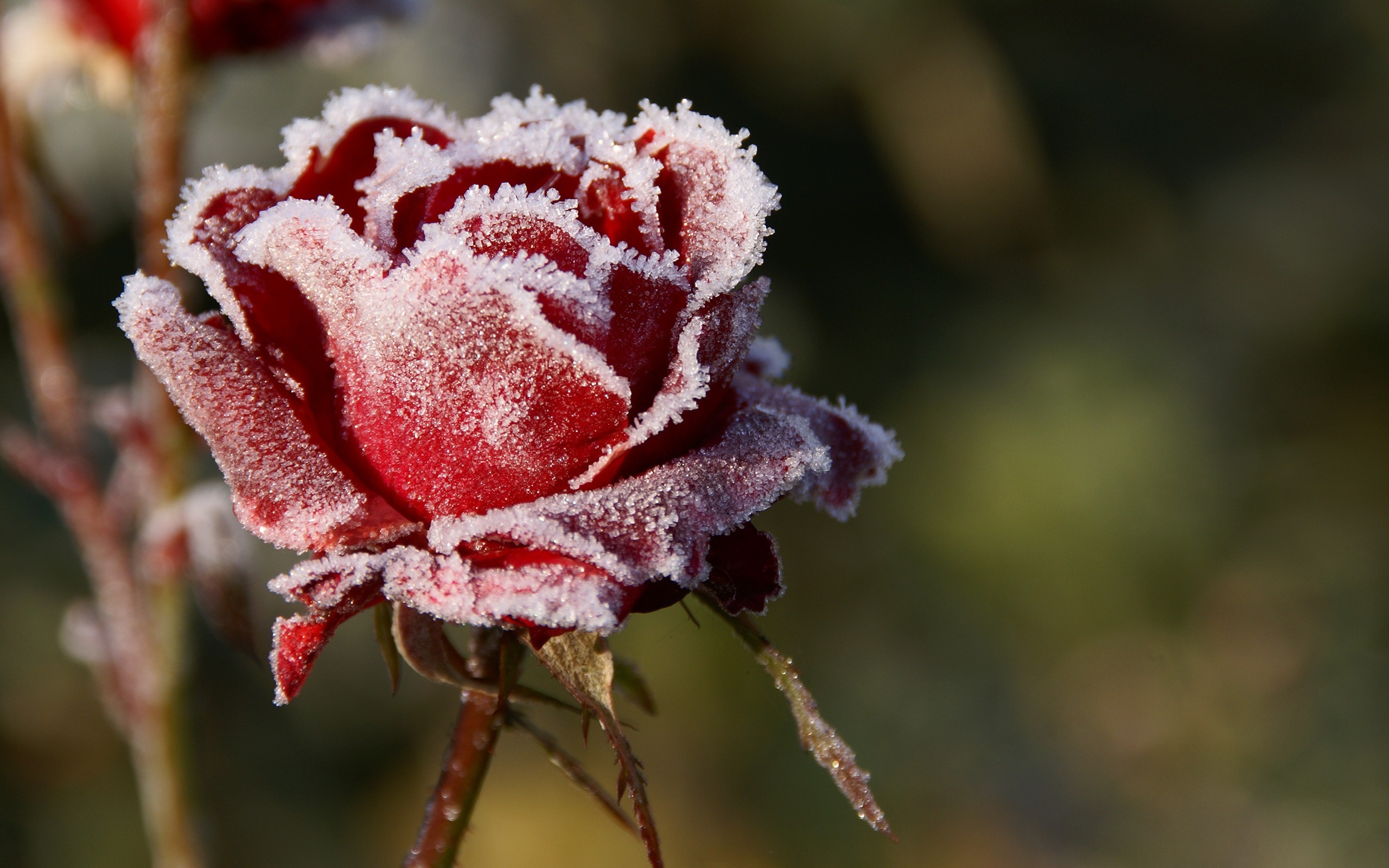 How to prune roses in the fall: timing, pruning rules, pros and cons
How to prune roses in the fall: timing, pruning rules, pros and cons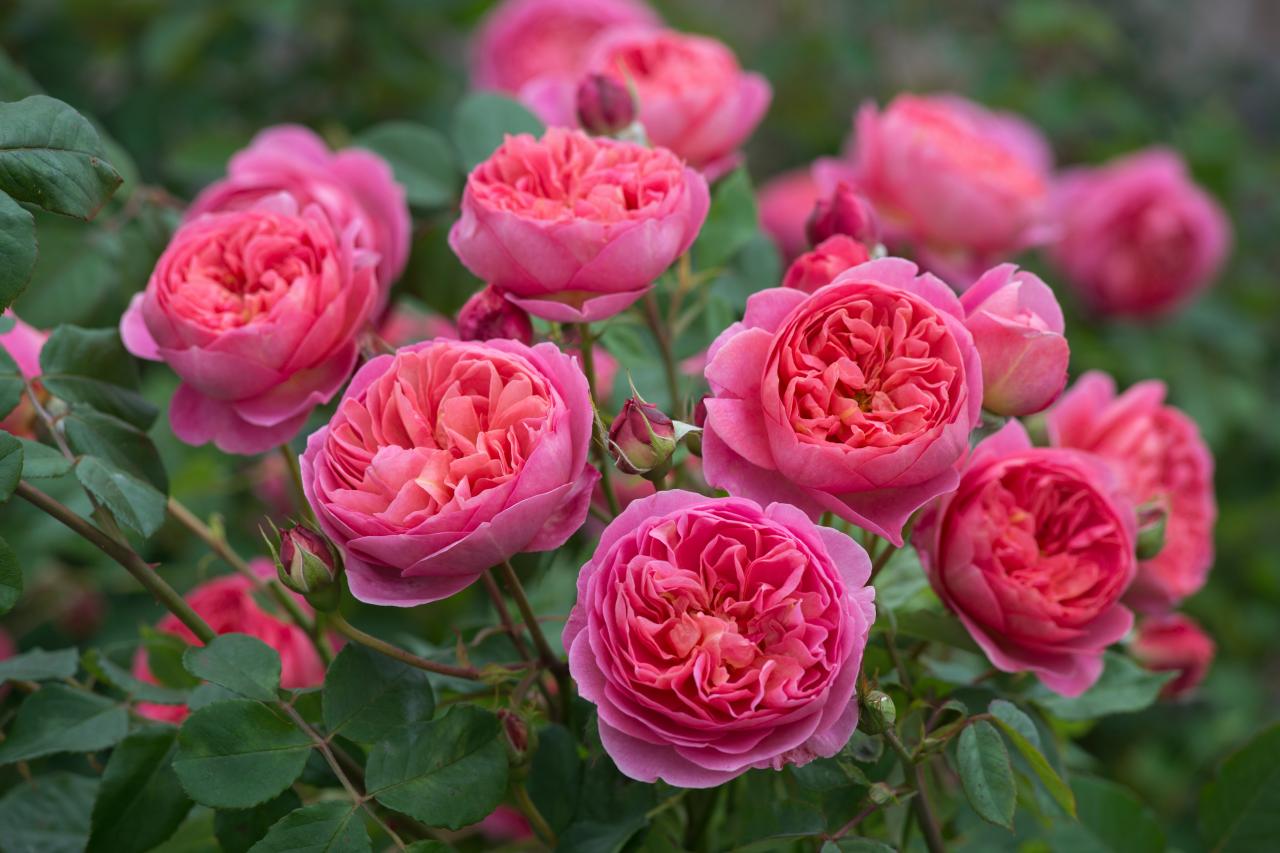 What are the varieties and types of roses
What are the varieties and types of roses How to process roses with iron sulfate in autumn: proportions, advantages and disadvantages
How to process roses with iron sulfate in autumn: proportions, advantages and disadvantages